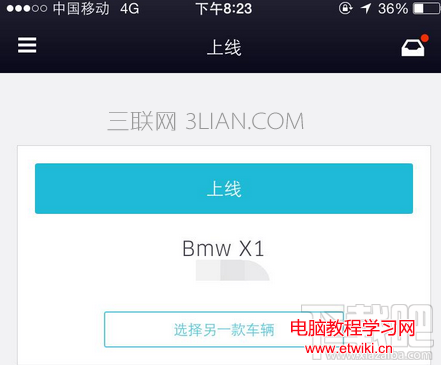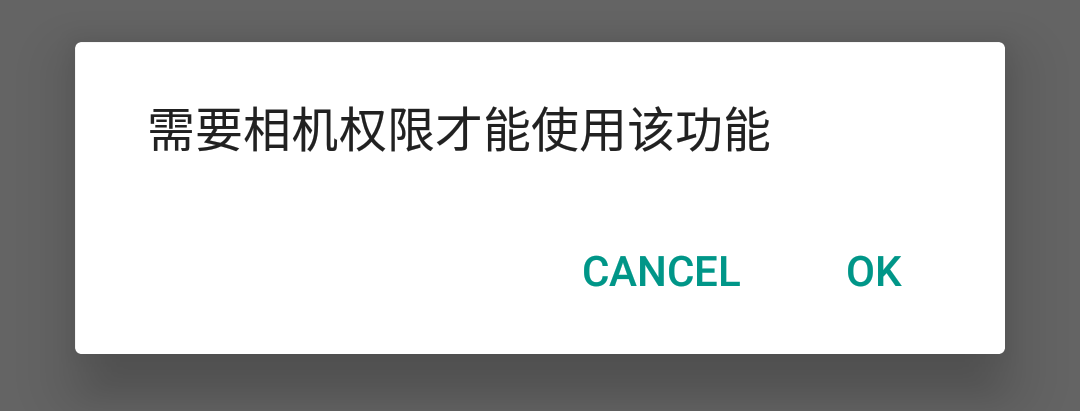編輯:關於Android編程
想要實現無限輪播,一直向左滑動,當到最後一個view時,會滑動到第一個,無限…
可以自己寫ViewPager然後加handler先實現自動滾動,當然這裡我為了項目的進度直接使用了Trinea的android-auto-scroll-view-pager庫,網址:點擊進入github 引用庫compile('cn.trinea.android.view.autoscrollviewpager:android-auto-scroll-view-pager:1.1.2') {
exclude module: 'support-v4'之後
1布局為
android:layout_height="@dimen/y150">
android:layout_width="match_parent"
android:layout_height="wrap_content" />
android:layout_width="match_parent"
android:layout_height="wrap_content"
android:layout_alignParentBottom="true"
android:layout_marginBottom="8dp"
android:gravity="center"
android:orientation="horizontal" />
2 構建PagerAdapter
繼承自RecyclingPagerAdapter (後面會貼出來源碼)
`public class Indicator1Adapter extends RecyclingPagerAdapter {
private List imageIdList;
Context context;
//是否循環(創造構造方法,在activity裡設置是否)
//集合大小
private int size;
public Indicator1Adapter(List mData, Context context) {
this.imageIdList = mData;
this.context = context;
this.size = mData.size();
isInfiniteLoop = false;
}
@Override
public int getCount() {
//是:最大(讓集合的長度無限,從而模擬無限循環) 否,集合長度
return isInfiniteLoop ? Integer.MAX_VALUE : imageIdList.size();
}
/**
* @return the isInfiniteLoop
*/
public boolean isInfiniteLoop() {
return isInfiniteLoop;
}
/**
* @param是否無限循環
*/
public Indicator1Adapter setInfiniteLoop(boolean isInfiniteLoop) {
this.isInfiniteLoop = isInfiniteLoop;
return this;
}
/**
* 真實的position
*
* @param position
* @return
*/
private int getPosition(int position) {
return isInfiniteLoop ? position % size : position;
}
@Override
public View getView(int position, View view, ViewGroup container) {
ViewHolder holder;
if (view == null) {
holder = new ViewHolder();
view = holder.imageView = new ImageView(context);
view.setTag(holder);
} else {
holder = (ViewHolder)view.getTag();
}
holder.imageView.setImageResource(imageIdList.get(getPosition(position)));
holder.imageView.setScaleType(ImageView.ScaleType.FIT_XY);
return view;
}
private static class ViewHolder {
ImageView imageView;
}
}
3 在activity裡或者fragment裡就可以設置ViewPager
定義的成員變量:
//viewpager1
@BindView(R.id.viewpager1)
AutoScrollViewPager mPager1;
//承載小點點的控件容器(布局裡有)
@BindView(R.id.ll_dot1)
LinearLayout mLlDot1;
Indicator1Adapter adapter1 = new Indicator1Adapter( mData,act).setInfiniteLoop(true);//開啟無限循環
mPager1.setAdapter(adapter1);
mPager1.setInterval(PLAY_TIME);//輪播時間間隔
mPager1.startAutoScroll();//開啟自動輪播
mPager1.setCurrentItem(Integer.MAX_VALUE / 2 - Integer.MAX_VALUE / 2 % mData.size());
然後你嫌棄官方的換圖間隔時間太短,一閃而過,可以通過反射 設置
//通過反射讓滾動速度為自己的喜好的(這裡設為1.2s)
try {
Field field = ViewPager.class.getDeclaredField("mScroller");
field.setAccessible(true);
FixedSpeedScroller scroller = new FixedSpeedScroller(mPager1.getContext(),
new AccelerateInterpolator());
field.set(mPager1, scroller);
scroller.setmDuration(1200);
} catch (Exception e) {
Log.e(TAG, "Exception", e);
}
4 然後我們的小點點還沒有使用呢
這裡我寫了方法:
/**
* 設置狀態點1
*/
private void setOvalLayout1() {
for (int i = 0; i < mData.size(); i++) {
/**
* 生成對應數量的點點(布局,結果提供)
*/
mLlDot1.addView(inflater.inflate(R.layout.dot, null));
}
// 默認顯示第一頁
mLlDot1.getChildAt(0).findViewById(R.id.v_dot)
.setBackgroundResource(R.drawable.dot_selected);
mPager1.addOnPageChangeListener(new ViewPager.OnPageChangeListener() {
public void onPageSelected(int position) {
//遍歷圖片數組
// Toast.makeText(act, "position"+position, Toast.LENGTH_SHORT).show();
for (int i = 0; i < mData.size(); i++) {
if(i==position%mData.size()){
// 圓點選中
/**
* 這裡需要注意如果直接寫position,由於我們是無限循環,他的position是無限往上
*增加的,那麼就會報空指針,因為我們總共才生成了mData.size()個點點,這裡可以讓當前的
*position取余,得到的即是當前位置的點點
*/
mLlDot1.getChildAt(position%mData.size())
.findViewById(R.id.v_dot)
.setBackgroundResource(R.drawable.dot_selected);
}else{
// 取消圓點選中
mLlDot1.getChildAt(curIndex1%mData.size())
.findViewById(R.id.v_dot)
.setBackgroundResource(R.drawable.dot_normal);
}
}
curIndex1 = position;
}
public void onPageScrolled(int arg0, float arg1, int arg2) {
}
public void onPageScrollStateChanged(int arg0) {
}
});
}
別忘了重寫
@Override
public void onPause() {
super.onPause();
// stop auto scroll when onPause
mPager1.stopAutoScroll();
}
@Override
public void onResume() {
super.onResume();
// start auto scroll when onResume
mPager1.startAutoScroll();
}
好了,無限循環自動輪播,完成了.
5點點布局:
6 點點的background
dot_normal.xml
dot_selected.xml
RecyclingPagerAdapter的源碼依賴RecycleBin類,一並貼出來
public class RecycleBin {
/**
* Views that were on screen at the start of layout. This array is populated at the start of
* layout, and at the end of layout all view in activeViews are moved to scrapViews.
* Views in activeViews represent a contiguous range of Views, with position of the first
* view store in mFirstActivePosition.
*/
private View[] activeViews = new View[0];
private int[] activeViewTypes = new int[0];
/** Unsorted views that can be used by the adapter as a convert view. */
private SparseArray[] scrapViews;
private int viewTypeCount;
private SparseArray currentScrapViews;
public void setViewTypeCount(int viewTypeCount) {
if (viewTypeCount < 1) {
throw new IllegalArgumentException("Can't have a viewTypeCount < 1");
}
//noinspection unchecked
SparseArray[] scrapViews = new SparseArray[viewTypeCount];
for (int i = 0; i < viewTypeCount; i++) {
scrapViews[i] = new SparseArray();
}
this.viewTypeCount = viewTypeCount;
currentScrapViews = scrapViews[0];
this.scrapViews = scrapViews;
}
protected boolean shouldRecycleViewType(int viewType) {
return viewType >= 0;
}
/** @return A view from the ScrapViews collection. These are unordered. */
View getScrapView(int position, int viewType) {
if (viewTypeCount == 1) {
return retrieveFromScrap(currentScrapViews, position);
} else if (viewType >= 0 && viewType < scrapViews.length) {
return retrieveFromScrap(scrapViews[viewType], position);
}
return null;
}
/**
* Put a view into the ScrapViews list. These views are unordered.
*
* @param scrap The view to add
*/
void addScrapView(View scrap, int position, int viewType) {
if (viewTypeCount == 1) {
currentScrapViews.put(position, scrap);
} else {
scrapViews[viewType].put(position, scrap);
}
if (Build.VERSION.SDK_INT >= Build.VERSION_CODES.ICE_CREAM_SANDWICH) {
scrap.setAccessibilityDelegate(null);
}
}
/** Move all views remaining in activeViews to scrapViews. */
void scrapActiveViews() {
final View[] activeViews = this.activeViews;
final int[] activeViewTypes = this.activeViewTypes;
final boolean multipleScraps = viewTypeCount > 1;
SparseArray scrapViews = currentScrapViews;
final int count = activeViews.length;
for (int i = count - 1; i >= 0; i--) {
final View victim = activeViews[i];
if (victim != null) {
int whichScrap = activeViewTypes[i];
activeViews[i] = null;
activeViewTypes[i] = -1;
if (!shouldRecycleViewType(whichScrap)) {
continue;
}
if (multipleScraps) {
scrapViews = this.scrapViews[whichScrap];
}
scrapViews.put(i, victim);
if (Build.VERSION.SDK_INT >= Build.VERSION_CODES.ICE_CREAM_SANDWICH) {
victim.setAccessibilityDelegate(null);
}
}
}
pruneScrapViews();
}
/**
* Makes sure that the size of scrapViews does not exceed the size of activeViews.
* (This can happen if an adapter does not recycle its views).
*/
private void pruneScrapViews() {
final int maxViews = activeViews.length;
final int viewTypeCount = this.viewTypeCount;
final SparseArray[] scrapViews = this.scrapViews;
for (int i = 0; i < viewTypeCount; ++i) {
final SparseArray scrapPile = scrapViews[i];
int size = scrapPile.size();
final int extras = size - maxViews;
size--;
for (int j = 0; j < extras; j++) {
scrapPile.remove(scrapPile.keyAt(size--));
}
}
}
static View retrieveFromScrap(SparseArray scrapViews, int position) {
int size = scrapViews.size();
if (size > 0) {
// See if we still have a view for this position.
for (int i = 0; i < size; i++) {
int fromPosition = scrapViews.keyAt(i);
View view = scrapViews.get(fromPosition);
if (fromPosition == position) {
scrapViews.remove(fromPosition);
return view;
}
}
int index = size - 1;
View r = scrapViews.valueAt(index);
scrapViews.remove(scrapViews.keyAt(index));
return r;
} else {
return null;
}
}
}
RecyclingPagerAdapter
public abstract class RecyclingPagerAdapter extends PagerAdapter {
static final int IGNORE_ITEM_VIEW_TYPE = AdapterView.ITEM_VIEW_TYPE_IGNORE;
private final RecycleBin recycleBin;
public RecyclingPagerAdapter() {
this(new RecycleBin());
}
RecyclingPagerAdapter(RecycleBin recycleBin) {
this.recycleBin = recycleBin;
recycleBin.setViewTypeCount(getViewTypeCount());
}
@Override public void notifyDataSetChanged() {
recycleBin.scrapActiveViews();
super.notifyDataSetChanged();
}
@Override public final Object instantiateItem(ViewGroup container, int position) {
int viewType = getItemViewType(position);
View view = null;
if (viewType != IGNORE_ITEM_VIEW_TYPE) {
view = recycleBin.getScrapView(position, viewType);
}
view = getView(position, view, container);
container.addView(view);
return view;
}
@Override public final void destroyItem(ViewGroup container, int position, Object object) {
View view = (View) object;
container.removeView(view);
int viewType = getItemViewType(position);
if (viewType != IGNORE_ITEM_VIEW_TYPE) {
recycleBin.addScrapView(view, position, viewType);
}
}
@Override public final boolean isViewFromObject(View view, Object object) {
return view == object;
}
/**
*
* Returns the number of types of Views that will be created by * {@link #getView}. Each type represents a set of views that can be * converted in {@link #getView}. If the adapter always returns the same * type of View for all items, this method should return 1. *
*
* This method will only be called when when the adapter is set on the * the {@link AdapterView}. *
* * @return The number of types of Views that will be created by this adapter */ public int getViewTypeCount() { return 1; } /** * Get the type of View that will be created by {@link #getView} for the specified item. * * @param position The position of the item within the adapter's data set whose view type we * want. * @return An integer representing the type of View. Two views should share the same type if one * can be converted to the other in {@link #getView}. Note: Integers must be in the * range 0 to {@link #getViewTypeCount} - 1. {@link #IGNORE_ITEM_VIEW_TYPE} can * also be returned. * @see #IGNORE_ITEM_VIEW_TYPE */ @SuppressWarnings("UnusedParameters") // Argument potentially used by subclasses. public int getItemViewType(int position) { return 0; } /** * Get a View that displays the data at the specified position in the data set. You can either * create a View manually or inflate it from an XML layout file. When the View is inflated, the * parent View (GridView, ListView...) will apply default layout parameters unless you use * {@link android.view.LayoutInflater#inflate(int, ViewGroup, boolean)} * to specify a root view and to prevent attachment to the root. * * @param position The position of the item within the adapter's data set of the item whose view * we want. * @param convertView The old view to reuse, if possible. Note: You should check that this view * is non-null and of an appropriate type before using. If it is not possible to convert * this view to display the correct data, this method can create a new view. * Heterogeneous lists can specify their number of view types, so that this View is * always of the right type (see {@link #getViewTypeCount()} and * {@link #getItemViewType(int)}). * @return A View corresponding to the data at the specified position. */ public abstract View getView(int position, View convertView, ViewGroup container); }
–>路要一步一步走,記住自己走過的路,不再犯同樣的錯誤,才是真正的成長!歡迎指點、交流。<–
 Android 安卓 VPN設置圖解 PPTP教程
Android 安卓 VPN設置圖解 PPTP教程
第一步: 打開手機主菜單,選擇“設置”,然後選擇“無線和網絡”第二步:選擇“虛擬專用網設置&rd
 優步在線客服怎麼聯系?優步怎麼聯系客服?
優步在線客服怎麼聯系?優步怎麼聯系客服?
優步在線客服怎麼聯系?優步怎麼聯系客服?如果你不在撥打優步客服電話沒人接時,是不是會很心煩呢?沒關系,優步不僅有客服電話,還提供在線客服咨詢哦!下載吧小編為
 Android權限
Android權限
系統權限 在運行時請求權限系統權限 Android是一個權限分離的操作系統,每個應用使用不同的系統身份運行(Linux用戶ID和群組ID)。系統的不同部分也被分隔進不同
 Android 使用OpenCV之編譯環境非CygWin方式(Win7+Eclipse+ADT+CDT+NDK)
Android 使用OpenCV之編譯環境非CygWin方式(Win7+Eclipse+ADT+CDT+NDK)
只有簡單的三步,官網寫的非常簡明全面,非常佩服 【准備】 1. Eclipse(Indigo) 2. ADT: 這個不說了,無非就是eclipse添加個an